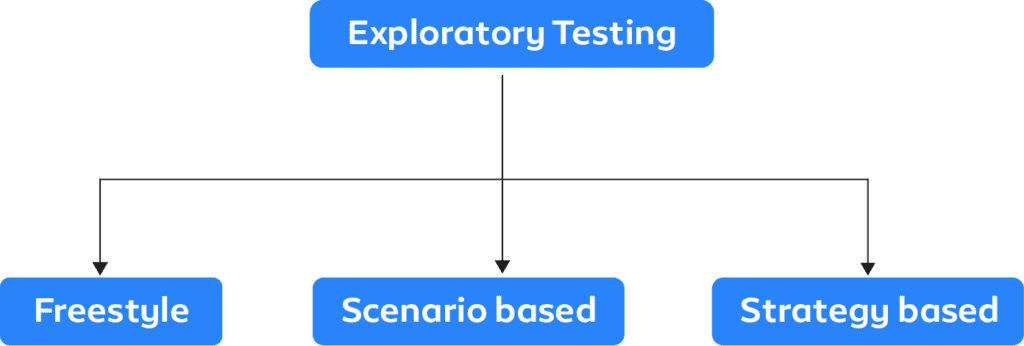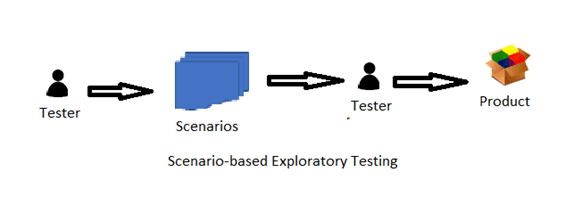- May 3, 2023
- Posted by: Jaswanth Kumar
- Category: Digital Assurance

Exploratory testing is a testing approach that will help you learn about the product. To perform this testing tester doesn’t require product knowledge. This testing can be done by a tester, BA, developers, Product Owner, and other team members.
What is Exploratory Testing?
Since exploratory testing is “investigative, experimental, or fact-finding,” as the name implies, anyone can perform it. Initial exploratory testing will be carried out by all new onboarding personnel to aid in their understanding of the application flow and other behaviour. Always recommend starting with exploratory testing.
Typically, exploratory testing is where testers, developers, and other team members begin to understand the product. Everyone will be able to comprehend the product’s behaviour and flow thanks to this. which facilitates the rapid collection of opinions and suggestions for more effective product improvement.
Exploratory testing is the best option to cover every aspect of the application.
When can you Use Exploratory Testing?
When the delivery of a requirement is urgent and the tester is without test cases and scripts to execute. In this case, exploratory testing is crucial to meeting the business needs and delivering high-quality results.
Types of Exploratory Testing
Freestyle Exploratory Testing
Freestyle exploratory testing is the most fundamental type of testing; instead of writing traditional test scripts, test cases, and test plans, we should come up with some test ideas that we can use to test the products. The products can be tested by users who provide random inputs.
This test allows testers with limited product knowledge or testers without any product knowledge to learn about the Products as they test them.
This testing method helps in finding defects that are not able to find in traditionally.
Scenario-based Exploratory Testing
To create a product free of bugs, real user scenarios must be applied to the application. Before exploring the application/product in any way to match those scenarios, testers first prepare scenarios. The tester must run as many scenarios as they can in order to maximise test coverage.
This type of testing is more like a human approach toward the product, which helps to find real-time scenario-based defects.
Strategy-based Exploratory Testing
This testing is usually assigned to senior people on the team or who have good knowledge of software testing and are familiar with software testing techniques like risk-based technique, equivalence technique, and boundary value analysis technique to identify more unique and challenging bugs.
Strategy-based exploratory testing acts as a great complement to functional testing when it is difficult to write test cases for specific features or to assess the overall user experience.
 Read this blog: chaos engineering and resilience testing as well.
Read this blog: chaos engineering and resilience testing as well.
The top few tools for exploratory testing are listed below.
| S.No | Names of Tools | Description |
|---|---|---|
| 1 | Testpad | A more organic checklist approach is used in Testpad, an online test management tool that reinvents manual testing. less difficult than spreadsheet hacking. less rigid than traditional test case management. Plan and pricing: 1. ESSENTIAL – Min f 3 users are included for $49/Month. 2. TEAM – 10 users included with $99/Month. 3. DEPARTMENT – 25 users included with $249/Month. CUSTOM –$15/Month |
| 2 | PractiTest | Bring all of your QA staff together in one area. Visualise your data to gain insightful, useful information. Work together with all teams to achieve business objectives. Plan & pricing: 1. PROFESSIONAL – $39/Per User / Per Month 2. ENTERPRISE – $ 49/Per User / Per Month 3. DEVELOPER – $ 9/Per User / Per Month ULTIMATE – Needs to contact PractiTest Team |
| 3. | Testiny | Manage all of your test runs and test cases, both manual and automated, in Testiny. Advanced, thorough test management includes a user-friendly interface, detailed reports, seamless integrations (Jira), and many other features. Plan & pricing: 1. Free – $ 0 / Per 3 users 2. Advanced – $17/Per User / Per Month Custom – Need to contact the Testiny Team |
| 4 | Test IO | Test IO is a cloud-based bug-tracking solution for small, midsize, and large enterprises. Free and open-source |
| 5 | Exploratory Testing Chrome Extension | This is a free and open-source extension for the Chrome browser that is designed to make exploratory testing of websites easier. Free and open-source extension for the Chrome browser |
Exploratory Testing Benefits
- No documentation is required before starting test activities.
- No Test design or Test case is required to start.
- We get Quick feedback on the application.
- It helps to dig in where automation cannot.
- Critical Bugs can be discovered.
- Users can learn in real-time.
Not being able to locate the service you require. Contact us if you need assistance.
Click Here
Conclusion
Exploratory testing is not a conventional method of software testing, but it is a very effective way to test a product or piece of software. It permits testers, BAs, Scrum Masters, product owners, and other team members to think creatively, push the envelope, and develop real-time test scenarios for issue detection. Due to its amorphous nature, exploratory testing can be applied to any procedure that only requires minimal documentation, regardless of whether it uses agile methodology, the waterfall model, or another software development life cycle prototype.







